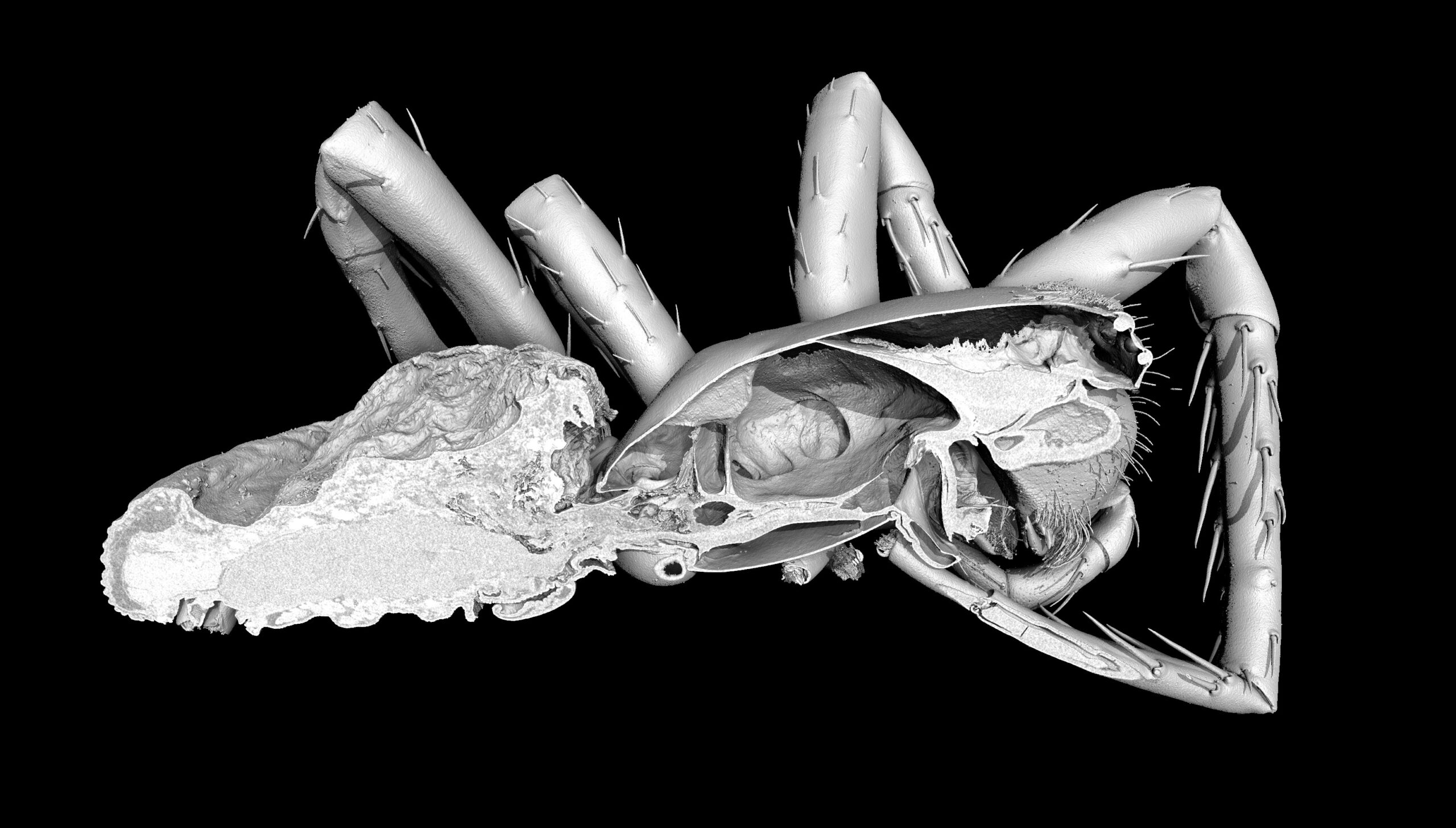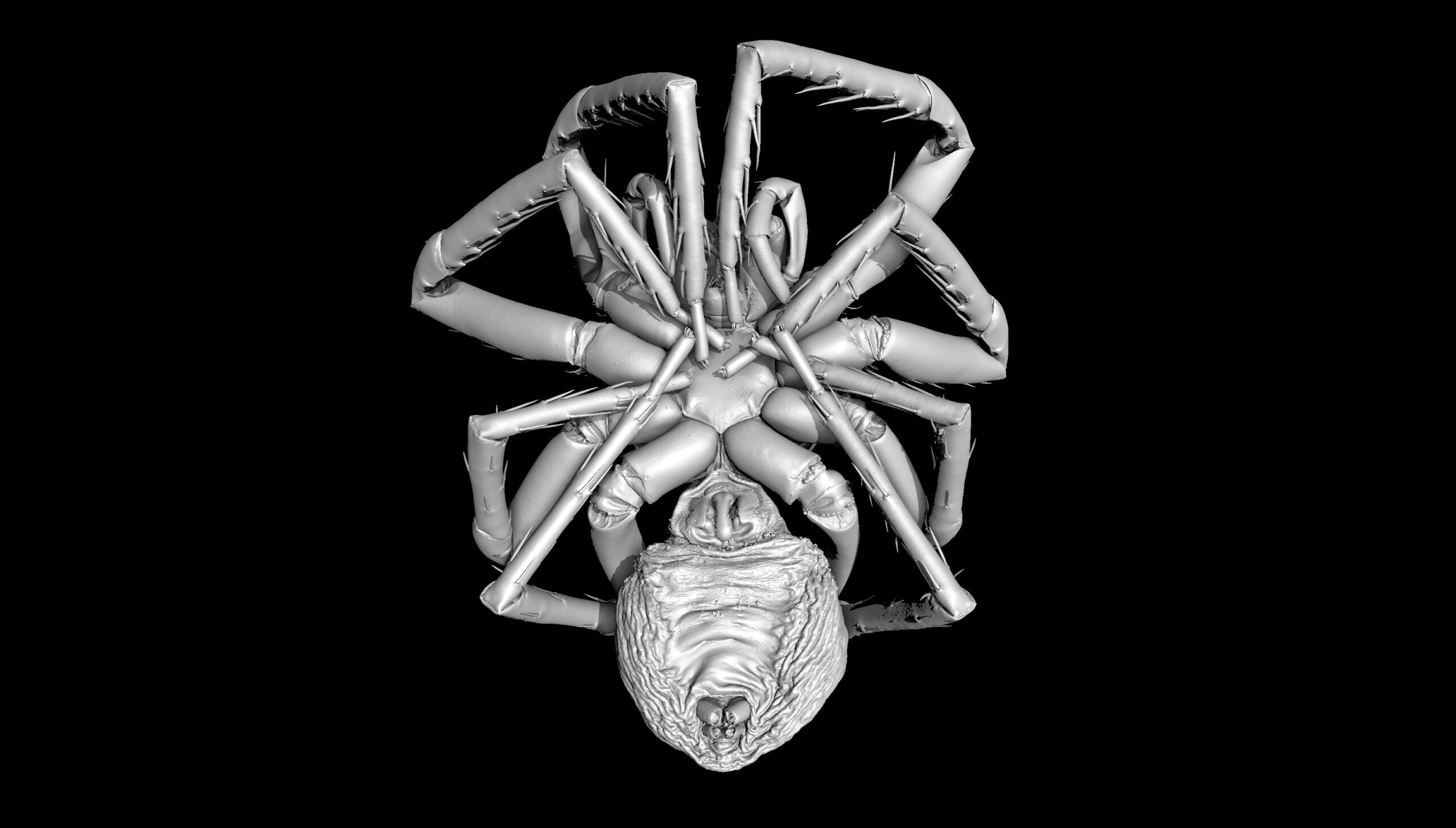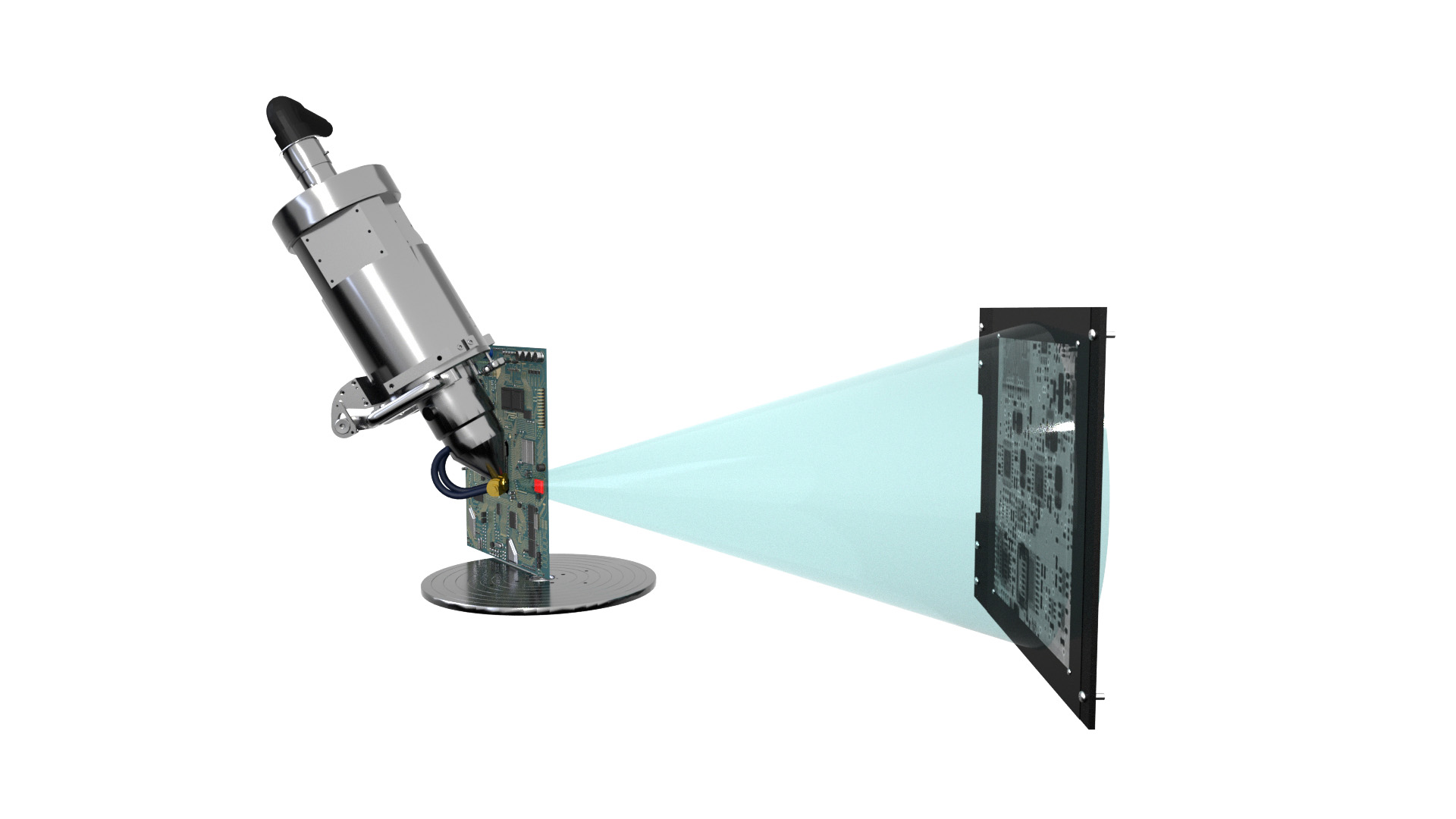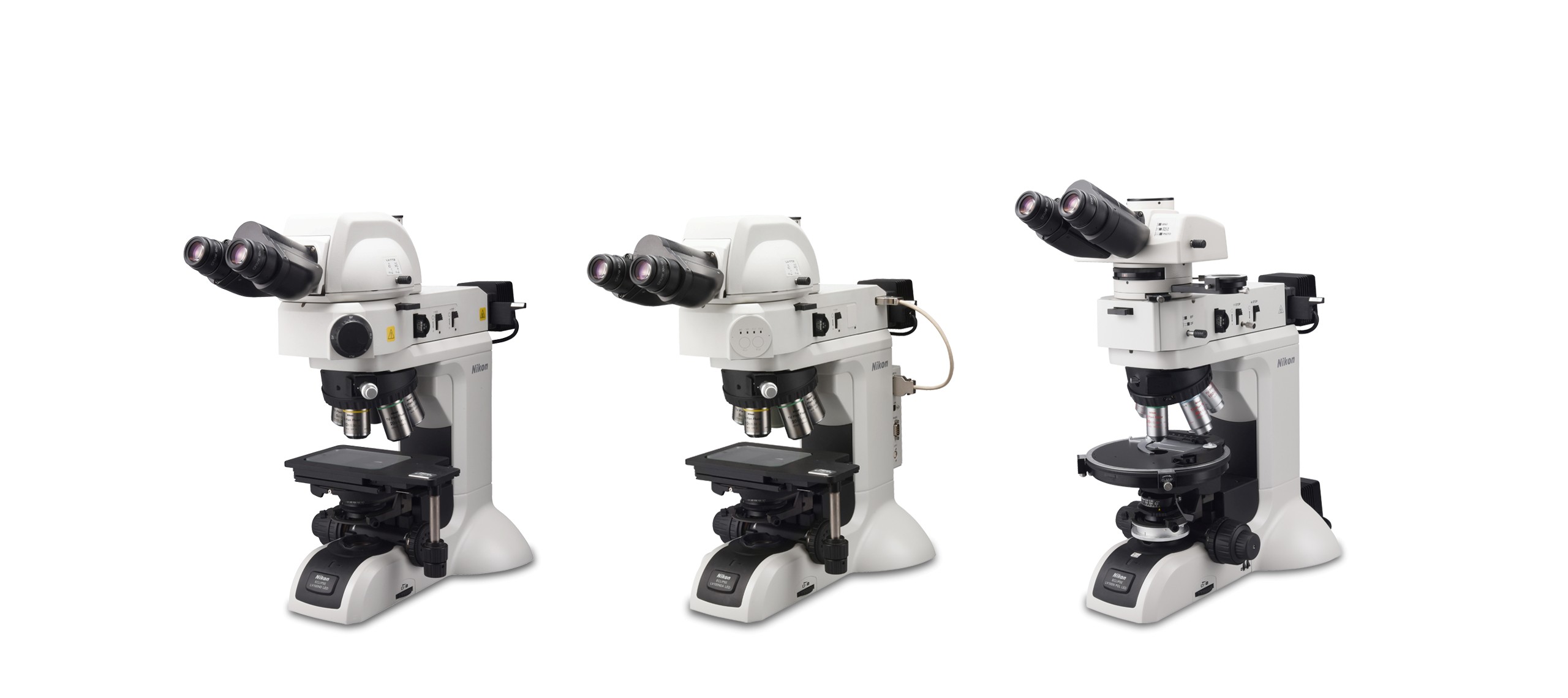Have you noticed more spiders in your home recently? There’s a biological reason for that: spiders invade our homes in September during their reproduction period, drawing males out of their hiding places to find females to mate with.
This month, Nikon Metrology’s Thomas Dreisbusch, Application Engineer X-ray & CT, has scanned a spider whose name alone causes fear and terror: the Nosferatu spider (Zoropsis spinimana).
Despite its foreboding name, this spider’s 1-2 cm body and 5 cm leg span make it more nuisance than a threat. Sticky hairs and secretions allow the poisonous Nosferatu spider to climb smooth vertical surfaces and bite if provoked.
While not dangerous, its appearance inside homes elicits unease. But the spiders come in peace, only to continue their species before retreating back to their hidden nooks.
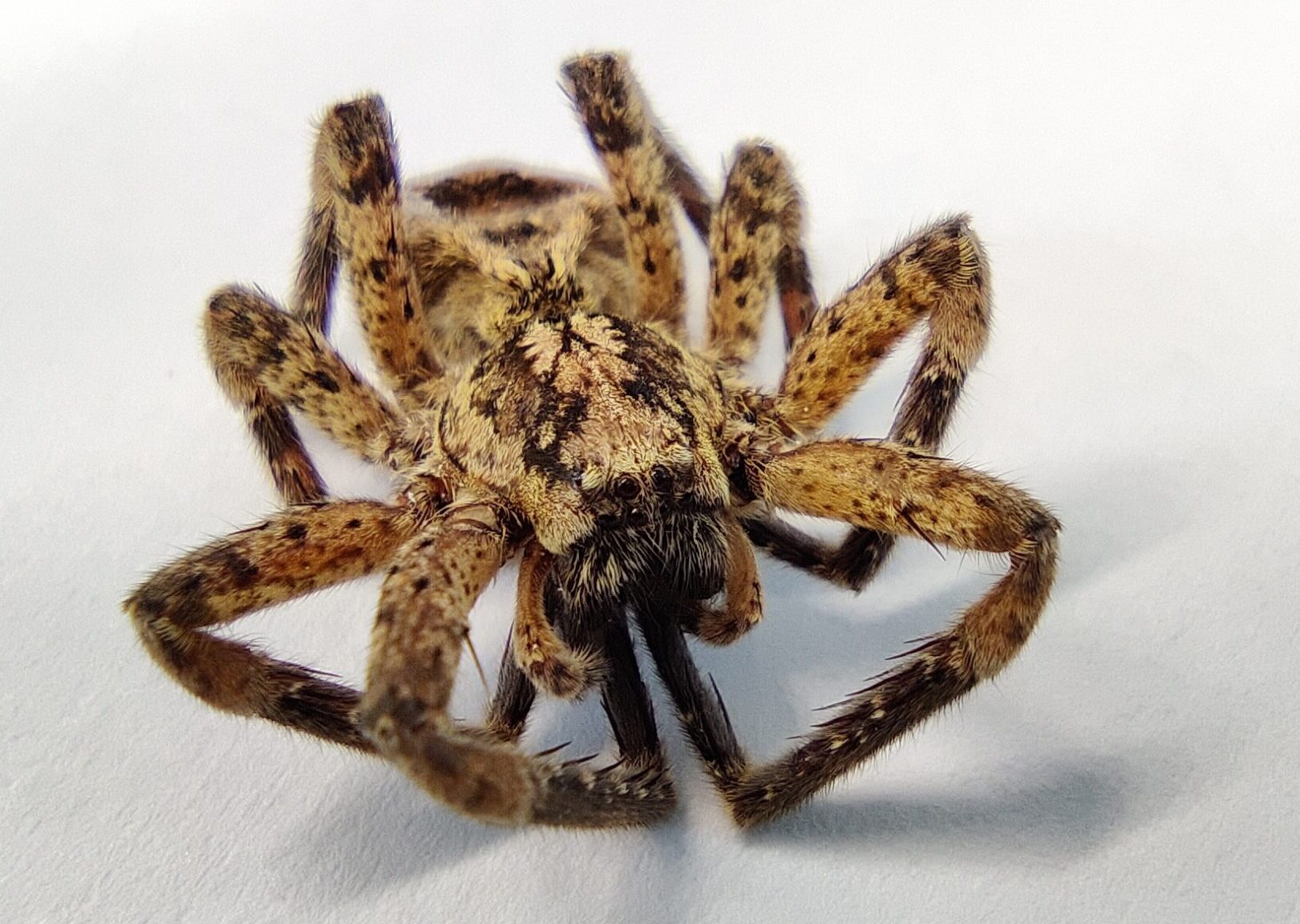
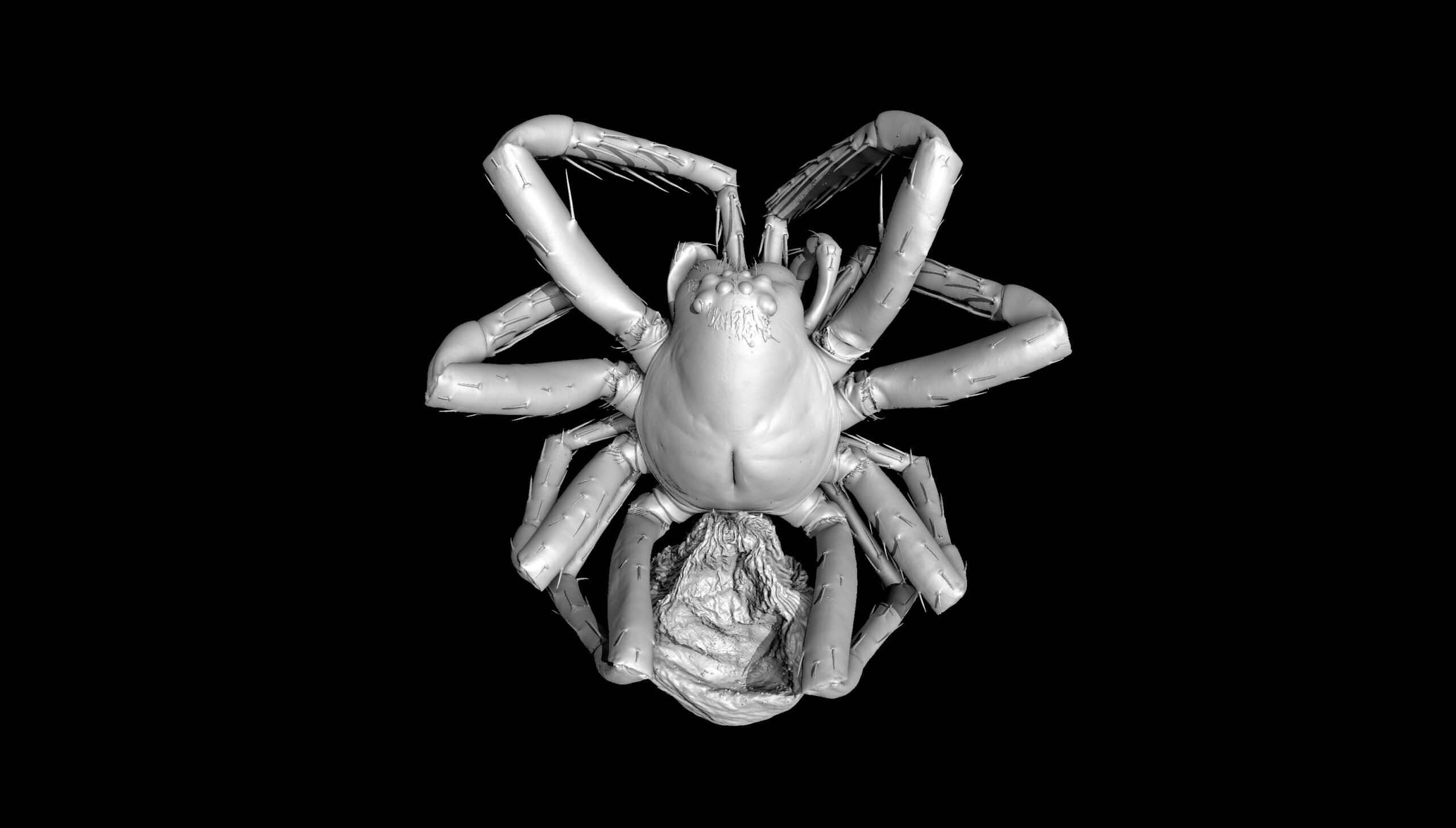
Nosferatu spiders lie in wait for their prey to come along, at which point they jump on and overwhelm the unfortunate victim.
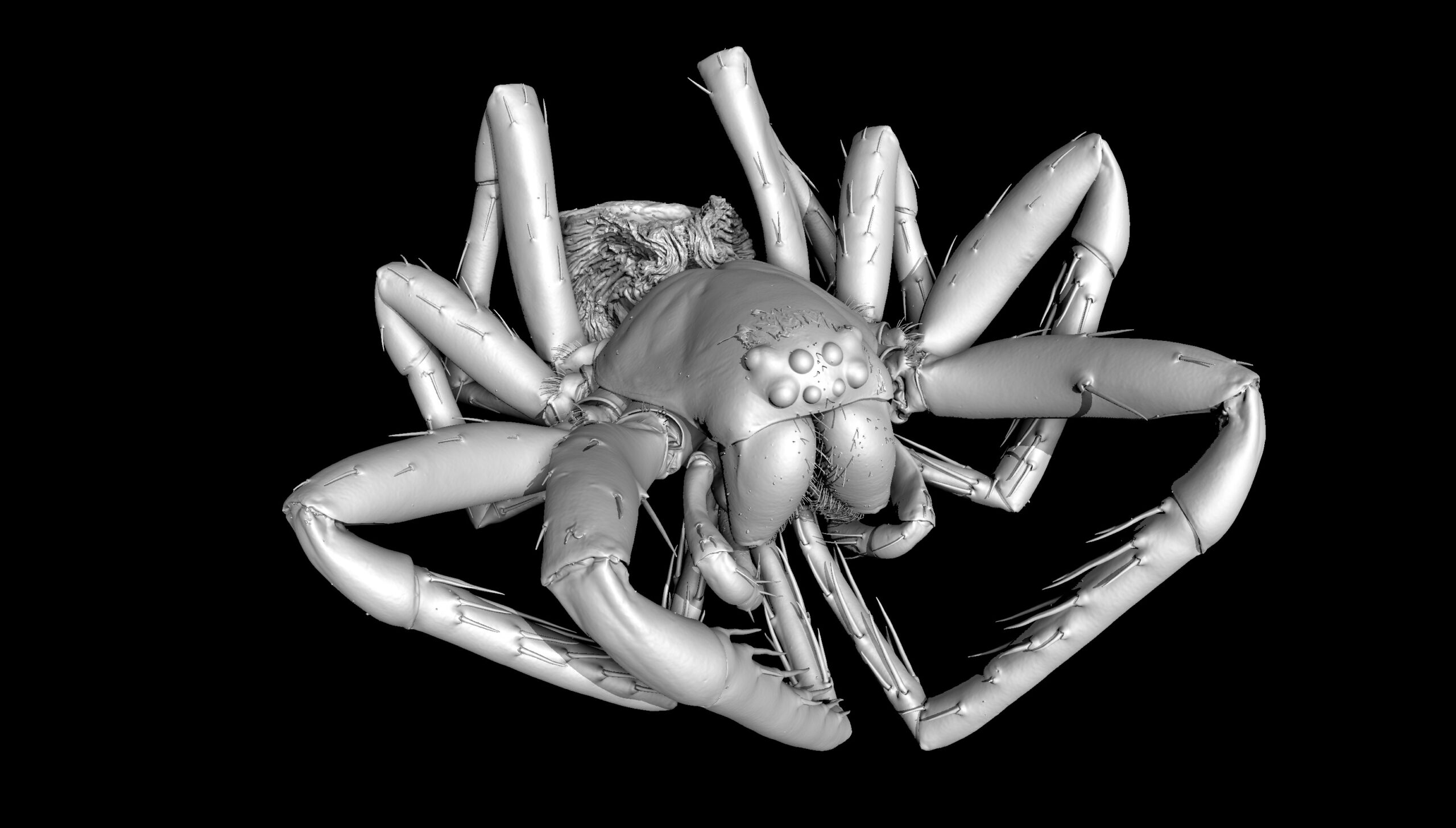
The scans here were performed at 7µm Voxel resolution using a XT H 225 ST 2x. With the high-resolution scan, it is possible to clearly identify hairs with a diameter of less than 10 µm. This system comes equipped with up to three different Nikon microfocus X-ray sources: a 180 kV, 20 W transmission target, a 225 kV, 225 W reflection target and a 225 kV, 450 W Rotating.Target 2.0.
The scans were performed using the 225 kV Rotating.Target 2.0 coupled with a Varex XRD 4343CT flat panel detector. For these scans, the detector acquired more than 4400 projections (individual radiographs) at an exposure time of 708 ms, resulting in a total scan time of 53 minutes.
